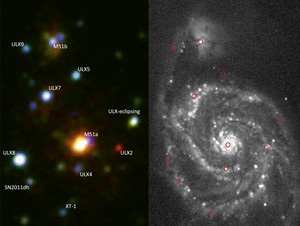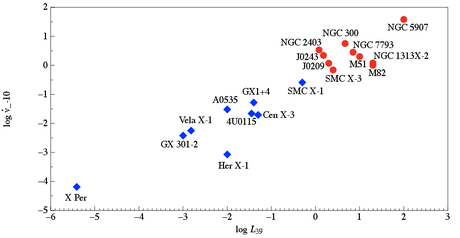Ultraluminous X-ray sources (ULXs) have luminosities Lx>1039 erg/s and are not located in galaxy centres. The defining luminosity has no astrophysical basis but has been chosen because it corresponds roughly to the Eddington luminosity of a black hole with ten solar masses. ULXs were identified in 1999 and, initially, the consensus was that they contain so-called intermediate-mass black holes (IMBH), i.e. black holes with masses grater then 100 solar masses, which would put them into the sub-Eddington luminosity domain. Only rare IMBH-sceptics (most notably King et al. 2001) pointed out that ULXs could be just the usual X-ray binaries observed at a special phase of their stellar evolution, during which the companion star of the accreting compact body (a stellar-mass black hole, a neutron star or a white dwarf) transfers mass at an exceptionally high (super-Eddington) rate. In such a case the observed super-Eddington luminosity would only be apparent due to the radiation geometrical beaming at source, since in the super-critical regime, the luminosity grows only as the logarithm of accretion rate. In 2014, the announcement of the detection of an X-ray pulsar in ULX-2 in the galaxy M82 (Bachetti et al. 2014) abruptly ended the controversy in favour of the stellar-mass accretor hypothesis. Kluźniak and Lasota (2015) pointed out that the pulsar (PULX) in ULX-2 is not only more luminous than the previously observed X-ray pulsars, but also that its spin-up rate is at least one order of magnitude larger than in those systems; they predicted the existence of other PULXs with similar properties and suggested that the ULX P13 in the galaxy NGC 7793 also belongs to this class of objects. This has since been confirmed. Up to now 10 PULXs have been observed — all with ultra-large spin-up rates (see Fig. 1). In total, about 1800 ULXs have been observed (Fig. 2 shows ULXs in the “Whirlpool” galaxy M51), only one of them located in the Galaxy. Four PULXs are Be-X binary systems that show X-ray outbursts when the eccentric orbit of the neutron star crosses the circumstellar disc of the massive Be star. Such sources become ULXs during so-called giant-outbursts, which illustrates how the usual X-ray pulsars become PULXs when flooded with super-Eddington accretion.

In a recent paper in the New Astronomy Reviews, Andrew King (Leicester, Amsterdam), Jean-Pierre Lasota (CAMK PAN, Warsaw and IAP, Paris) and Matthew Middleton (Southampton) review in detail the most important observations of ULXs at various wavebands and across multiple scales in space and time. They discuss recent progress and current unanswered questions. They present the range of current ULX models in the light of this observational progress. Applying these models to neutron-star ULXs is a particularly stringent test, as this is the unique case where the mass of the accretor is effectively fixed. They conclude that the case for disc–wind beaming appears fairly strong, and is so far compatible with a large body of data. Given that the photon–bubble model does not appear promising, this is the only model which can straightforwardly apply to both black–hole and neutron–star accretors. The popular magnetar-PULX model is excluded by the super-large spin-up rates which are incompatible with the super-Eddington luminosity.
Bachetti M., et al., 2014, Nature, 514, 202. doi:10.1038/nature13791
King A., Lasota J.-P., Middleton M., 2023, NewAR, 96, 101672. doi:10.1016/j.newar.2022.101672
King A.R., et al., 2001, ApJL, 552, L109. doi:10.1086/320343
Kluzniak W., Lasota J.-P., 2015, MNRAS, 448, L43. doi:10.1093/mnrasl/slu200







